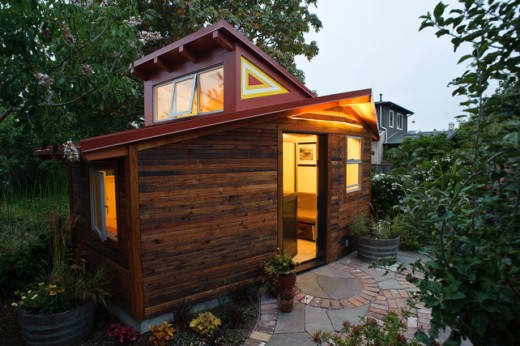Can you cut 1 Tonne of carbon pollution out of your life?
Take the challengeA little while ago I wrote a blog about the emergence of the Tiny House movement, and now it's officially reached our shores!
In Melbourne a small group of people gathered in a Victorian State Forest. Members of the Tiny Houses Australia community are attending a Spring Camp to talk about how to build a tiny house, compare notes and how to tackle common obstacles. The group contains an array of people, from students to professionals to retirees. Each in the group have different reasons for downsizing their homes, but all are promoters of sustainable and minimalistic lifestyles.
Australia has the second most unaffordable housing market among member nations of the Organisation for Economic Co-operation and Development (OECD). Australian houses are also among the largest in the OECD. According to The Conversation , in 2008 the average new house was 214 square metres, which was double the size of an average 1950's house. Large houses are more expensive and environmentally unsustainable. The bigger and more isolated the house, the larger it's greenhouse gas emissions. Because of the increase in size of houses and in price, the younger generation with the hope of buying a house is becoming less and less. Even rental accommodation lacks affordable options.
Out of these expensive and difficult housing options and a growing environmental consciousness in Australia, the Tiny House trend has emerged! The movement originated in the United States in the late 1990's, in response to a similar situation Australia is in, with unaffordable housing and a desire to live more sustainably. The movement has now made its way to New Zealand, Australia and Canada.
Tiny houses are overall extremely sustainable, they have reduced energy and water use and are often "off the grid" and they are affordable. They use significantly less resources to build, and are often constructed from salvaged materials.

Photo by Lenny Gonzalez
The idea of a mobile home could also prepare inhabitants to adapt to climate change, a house that can escape floods and storms, and move from danger. They can also help homeless people, for example, in the United States, some local government are donating land for homeless people to build their own tiny homes on.
However, an issue with tiny houses, is finding a place to put it. Tiny houses unfortunately do not conform to many local government planning schemes or building codes, for example minimum house sizes, maximum number of houses per plot, connection to utilities, parking provisions and restrictions on temporary occupation. There will obviously have to be planning restrictions on tines houses, so to ensure they comply with building codes and standards.
Personally, I think these houses are great. For a sustainable city, which every city should aspire to be, everyone should be able to afford housing, and not be buried in mortgage and debt.
Everyone should be able to build their own small home, out of recycled materials, and live there happily and with minimum environmental impact. Could the tiny house movement be the answer to homelessness and unaffordable housing situations?
What do you think? Let us know, comment below.


